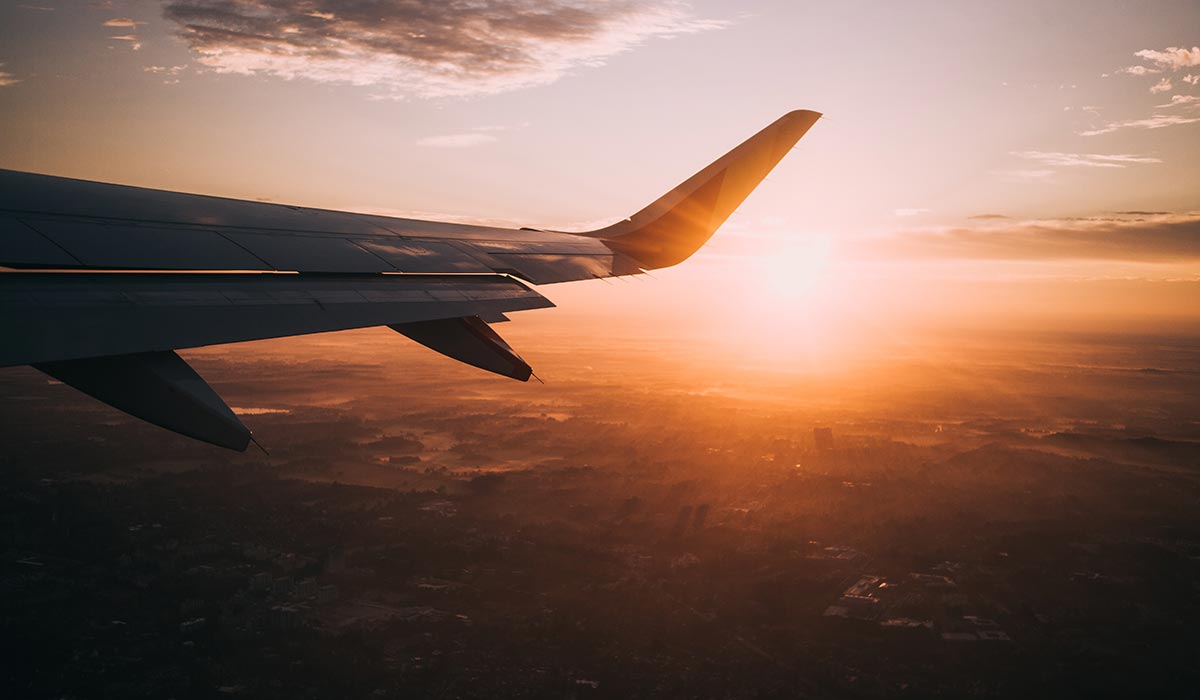This article was published on: 07/30/19 8:54 PM

“Please keep your seat in the upright position; please look around and be aware of where the closest exit is to you, being mindful that it may be located behind you.” These are phrases that many people take for granted as they are settling in with some pretzels and a beverage for a comfortable flight. They are phrases that that many of us have heard before, perhaps numerous times. It’s the voice of a flight attendant just before a flight takes off or just before landing instructing everyone on flight safety procedures.
For some people, flying can be an enjoyable experience, a time to relax, read, or catch up on work. But for others, even just the thought of flying can trigger sensations of fear and panic. Aviophobia, otherwise known as the fear of flying is a common specific phobia. In general, Anxiety and Depression Association of America (ADAA) reports that anxiety disorders are the most common mental health concern in the US, affectecting 18.1% of the adult population, with specific phobias affecting 8.7%. Within that 8.7% is a population of adults suffering from the fear of flying.
What are specific phobias? You’ve likely heard many of your friends and acquaintances exclaim, “I am terrified of needles!” Or “I can’t stand the sight of spiders; I will just pass out!” Specific phobias are characterized by extreme fear or anxiety related to an object or situation. People suffering from a specific phobia typically avoid the object or situation completely or tolerate it with intense discomfort. For example, most people don’t like spiders, snakes or mice and many people are uncomfortable driving, flying and using elevators. However, this only becomes diagnosed as an anxiety “disorder” when the distress and avoidance interferes with their functioning and quality of life. If someone is afraid of flying but does so when necessary, their fear won’t likely cause impairment. However, if they start avoiding flying to the degree that it causes significant impairment or distress, it has most likely become a “disorder”.
According to The National Safety Council, flying is considered one of the safest modes of transportation. They note that people tend to get comfortable with risks that we take on a regular basis such as driving. We drive or ride as passengers in cars, trains, subways, buses and other modes of ground transportation. Unless someone has a specific phobia of driving, most of us don’t get into our cars on the way to work or to a social event and worry about getting in an accident. We may have an occasional thought about it but rarely, if ever avoid driving to prevent a fatal accident. However, the risk of death from an automobile accident is actually much more likely than dying in a plane crash. Not that people who have a fear of driving should be triggered by this. We ALL take the risk of driving to work, to career development opportunities, family & social events because we view the travel and the risk as minimal and therefore worth it.
So then, why are so many of us afraid of flying? The answer is that our fear is out of proportion to the actual risk of danger. Our fears are irrational and this is quite normal! It happens to the best of us. When we are triggered and in the heat of intense emotion, our thoughts come at us in very extreme forms. In the heat of the moment they come at us under rapid fire in catastrophic measures. There is no middle ground! It is ALL or NOTHING! We are either going to die a horrific & tragic death or come out unscathed. Does this mean we are over-reactive and weak? ABSOLUTELY, NOT!!! It means that you got triggered by a thought that defies your life values and goals and registers as totally unacceptable for you. Anxious worries, anxieties & fears attack what is most important to us. If crashing in a plane would be SO horrible for you, you’re going to fight it tooth & nail.
There is good news and there is better news! The good news is that there is growing recognition and appropriate training for mental health clinicians to treat flying fears. The better news is that treatment is available and becoming more innovative with technology. The first step is to get a thorough evaluation by a mental health clinician who is familiar with anxiety and related disorders. Proper evaluation is essential to ensure that treatment is addressing the targeted symptoms, as a “fear of flying” could include a wide variety of specific fears that must be targeted directly for effective results. In other words, some individuals might be afraid of a crash, where as others might be afraid of experiencing a panic attack, or any number of other concerns. Just because a person is afraid to fly, doesn’t mean they are afraid of flying in and of itself. Some people may be afraid to fly because they are afraid they will vomit on the plane. In this case, the treatment needs to be focused on the vomit fear, not the flying itself. Others may be afraid of contamination on a plane, again, not specifically flying. In this case, the contamination fear is what needs to be addressed. In both of these examples, once the core fear is treated, the fear of getting on a plane will resolve. This is why it is very crucial that you seek therapy from a person who specializes in treating anxiety rather then someone who generalizes and treats many different classes of disorders and problems. If your therapist specializes in treating all of the anxiety disorders and obsessive and compulsive related disorders from a cognitive behavioral perspective, you are in the right hands.
What is the treatment for fear of flying? Research shows that cognitive behavioral therapy that includes exposure and response prevention (ERP) is the most effective treatment when it comes to this phobia. ERP is the behavioral component Cognitive Behavioral Therapy (CBT) that addresses phobias by introducing the feared stimuli by situational or imaginal exposures while simultaneously resisting the compulsive behaviors regularly engaged in to prevent or alleviate discomfort. In short, facing one’s fear, including the physiological discomfort, distressing thoughts, while engaging in non-avoidant behavior. Some therapists will include visits to the airport and even flying with patients during treatment. A good CBT therapist will use technology such as internet-based visual and auditory to simulate flying for exposure therapy. Campos et al. (2016) offers promises of future treatment using internet-based visual and auditory exposures that simulate numerous stimuli experienced in flying. The trial study suggests promising results for addressing specific phobia through more affordable means as technology and implementation develop.
Anxiety and Depression Association of America. https://adaa.org/about-adaa/press-room/facts-statistics
Abramowitz, J.S., Deacon, B.J., Whiteside, S.P.H. (2011). Exposure therapy for anxiety: principles and practice. (not cited)
Campos, D., Breton-Lopez, J., Botella, C., Mira, A. Castilla, D., Banos, R. Torgella-Feliu, M., & Quero, S. (2016). An Internet-based treatment for flying phobia (NO-FEAR Airlines): study protocol for a randomized controlled trial. BMC Psychiatry, 16, 296.
Diagnostic and statistical manual for psychiatric disorders, 5 (2013). American Psychiatric Association.
National Travel Safety Board. 2016-2017 US Transportation Fatalities.
https://www.ntsb.gov/investigations/data/Pages/Data_Stats.aspx.
Van Gerwen, LJ, Diestra, RF (2000). Fear of flying treatment programs for passengers: an international review. Aviation Space Environ Med. April, 71 (4) 430-437.
U.S. National Transportation Safety Board. (2001). Survivability of accidents involving U.S. air carrier opperations, 1983-2000. Flight Safety Digest.
https://flightsafety.org/fsd/fsd_oct01.pdf
written by Carolyn Muscar, LGPC, Clinical Associate and edited by Andrea G. Batton, LCPC, Clinical Director

 The Maryland Anxiety Center was founded by Andrea G. Batton, LCPC with a vision of creating a practice where clinicians and staff work cohesively and collaboratively with patients to provide optimal psychological care. The Maryland Anxiety Center specializes in the treatment of anxiety and related disorders from a cognitive behavioral perspective, the gold-standard and most effective treatment for such conditions.
The Maryland Anxiety Center was founded by Andrea G. Batton, LCPC with a vision of creating a practice where clinicians and staff work cohesively and collaboratively with patients to provide optimal psychological care. The Maryland Anxiety Center specializes in the treatment of anxiety and related disorders from a cognitive behavioral perspective, the gold-standard and most effective treatment for such conditions.